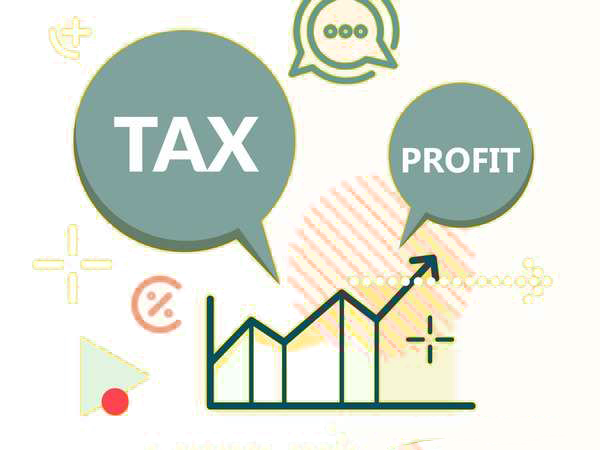The deadline for filing an ITR is till July 31, 2023 for the financial year 2022-23 (assessment year 2023-24), Discover the process, key details, and valuable tips of filing it.
How to File ITR incase if you’re a Trader?

Filing income tax returns (ITR) for traders follows a different process compared to investors. Traders are individuals who actively participate in frequent transactions, aiming to profit from price fluctuations.
Investments result in capital gains, while business activities lead to business income or losses.
To understand more in details, If an individual purchases shares and holds them for a specific period before selling, it may be classified as an investment. However, according to income tax laws, taxpayers have the flexibility to decide whether they want to treat it as trading or investment. Consistently follow this decision in subsequent years.Always consider intraday trading and F&O trading as business activities.
What is the procedure for reporting income from trading?
When it comes to income from stock market trading, individuals need to disclose it in their tax return form. There are two types of income that can arise from stock market trading:
1. Income from intraday trading
2. Income from trading stocks held for more than a day.
It is important for traders to be thorough in their tax filing because trading activity is considered as business income in tax returns. Income from intraday trading is treated as income or loss from speculative business after deducting the security transaction tax (STT) paid on those transactions.
Furthermore, traders should report this income as speculative business income in the ITR-3 form.
What is ITR-3 Form?

ITR-3 form is for resident individuals and HUFs earning income from a business or profession. If you have income from a business you own or a profession like accounting, architecture, medicine, engineering, etc., you can use the ITR-3 form to file your income tax returns. Therefore, Stock Market Traders are also applicable for this type of ITR.
Also, if you receive a salary, have income from a house property, or earn income from other sources, you can disclose that income along with your F&O income in the ITR-3 form. However, if you follow a presumptive income scheme and declare profits at a fixed percentage of your turnover (6% for digital transactions and 8% for non-digital transactions, with security traders declaring 6% of turnover), you should file ITR-4. On the other hand, if you declare your F&O income as presumptive business with capital gains, you will need to file ITR-3.
What is the process for reporting capital gains in the ITR?
When reporting income from stocks or equity held for more than one day, it is categorized as gains or losses from capital asset transactions. This information needs to be included in ITR-2 Form under the “Capital Gains” section.
Differentiating between short-term and long-term gains depends on the holding period:
1. Long-term gains requiring a holding period of more than 12 months.
2. Short-term capital gains from stock trading are taxed at a rate of 15 percent.
Long-term capital gains are subject to a 10 percent tax rate after deducting the Rs 1 lakh threshold limit without indexation benefits.
What is the procedure for reporting losses from F&O trades?
You must report F&O trading losses in your tax return, even if you don’t owe any taxes. Not reporting losses can lead to a notice from the Tax Department. However, reporting losses has advantages. You can deduct F&O losses from other income (except salary) to lower your taxable income. If losses exceed current year’s income, you can carry them forward for up to eight years. Remember, carry forward losses can only offset future business income, not other income.
Let’s consider Karan, who trades in F&O. In the financial year 2019-20, he had a trading loss of Rs 2 lakhs. He incurred expenses of Rs 1 lakh, including brokerage charges, telephone expenses, and internet expenses. Karan also had interest income of Rs 3.5 lakhs. By adding the expenses to the trading loss, Karan’s net loss from F&O was Rs 3 lakhs. Considering both the F&O loss and the interest income, so after subtracting the two, Karan’s total taxable income amounted to Rs 50,000.
To reduce his taxable income, Karan should report his F&O loss in his income tax return (ITR) and offset it against his interest income.
Traders requires these documents to file an ITR
- Form 16
- Form 26AS tax credit statement
- Aadhar card
- Bank statement when interest received is above Rs. 10,000
- Trading account statement from the broker
To Sum Up
In summary, traders should be aware of their tax responsibilities and accurately report their income and losses in their Income Tax Return (ITR). They should categorize income from F&O trading as business income and determine if capital gains are short-term or long-term based on stock holding period. Reporting losses is beneficial as they can be offset against other income, reducing taxable income. Keeping records of trading expenses and maintaining proper documentation is important. By following these guidelines, traders can fulfill tax obligations and comply with tax authorities.
Achieve financial independence as a profitable trader while maintaining your regular job.
Click Here To Register

Also, Check out our article on Tax Deducted at Source (TDS)
Disclaimer: The information provided in this Blog is for educational purposes only and should not be construed as financial advice. Trading in the stock market involves a significant level of risk and can result in both profits and losses. Spider Software & Team does not guarantee any specific outcome or profit from the use of the information provided in this Blog. It is the sole responsibility of the viewer to evaluate their own financial situation and to make their own decisions regarding any investments or trading strategies based on their individual financial goals, risk tolerance, and investment objectives. Spider Software & Team shall not be liable for any loss or damage, including without limitation any indirect, special, incidental or consequential loss or damage, arising from or in connection with the use of this blog or any information contained herein.





